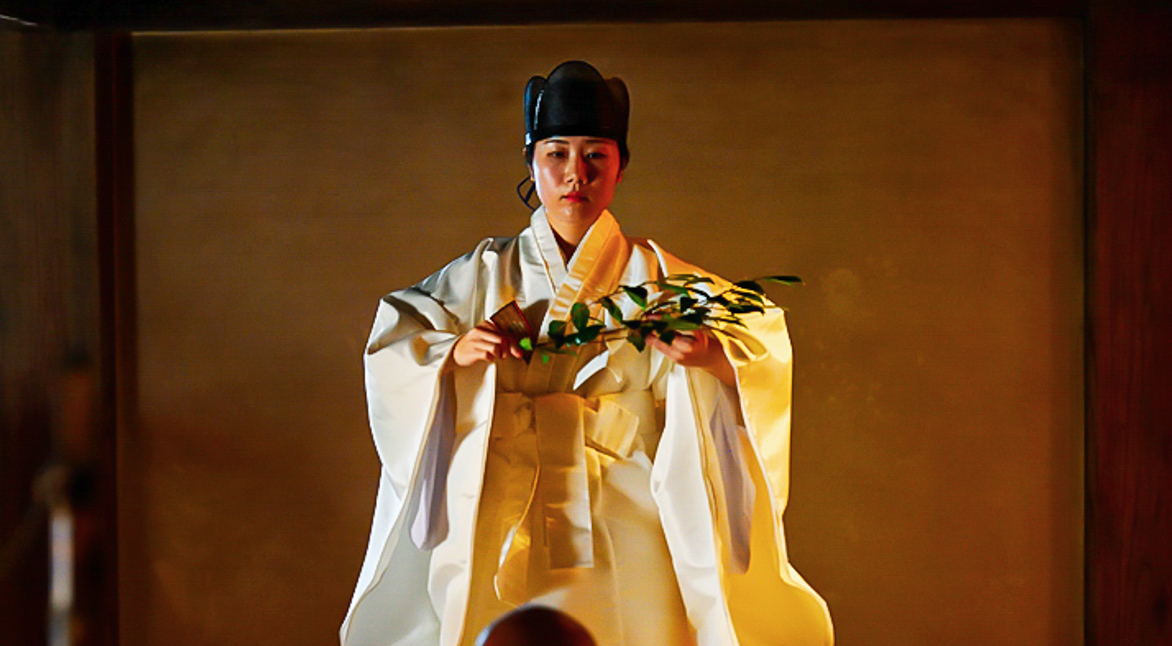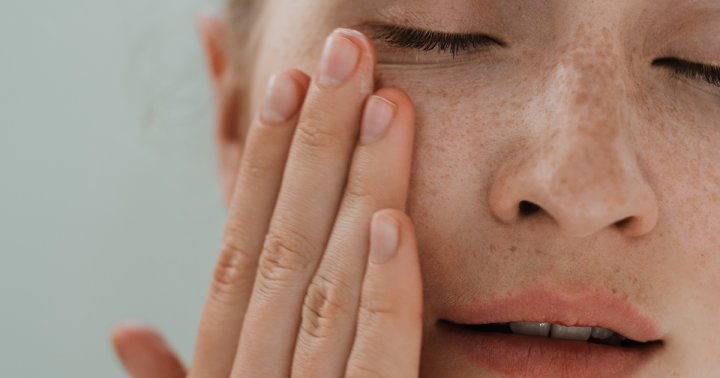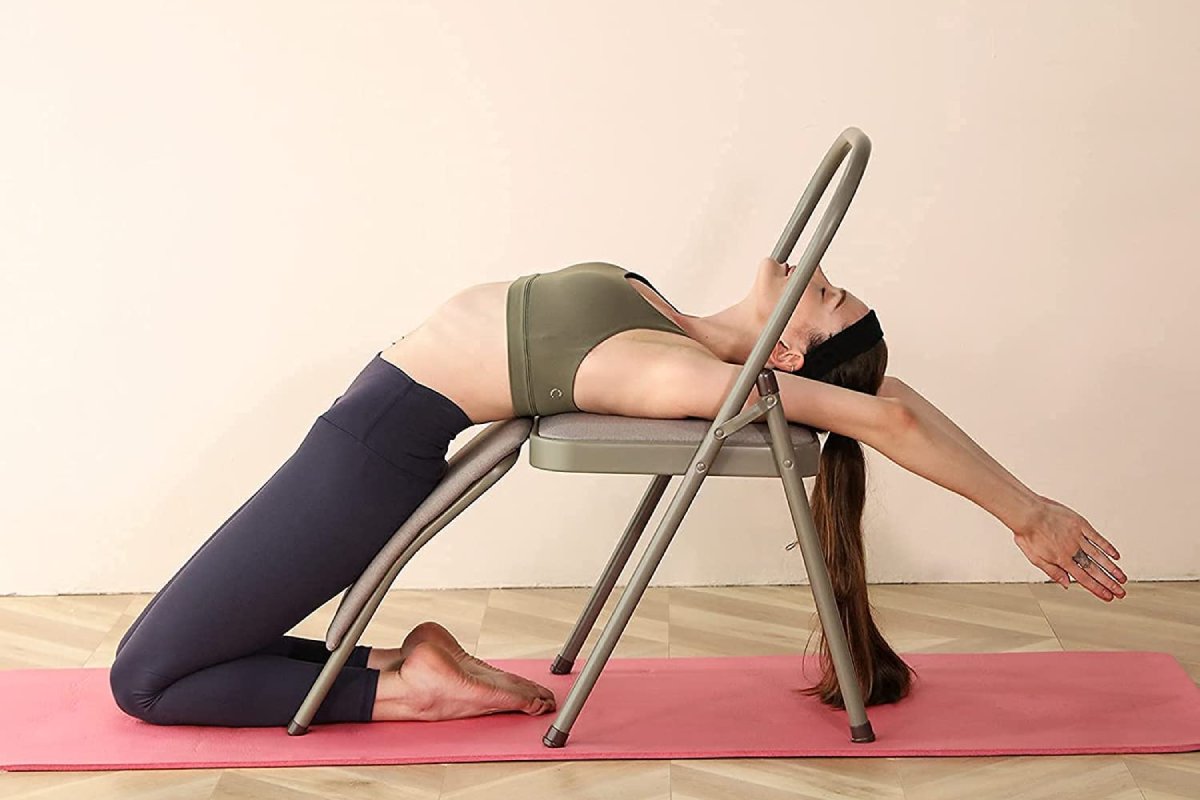Shugendo Everywhere
How two women ascetics practice outside the limits of a sacred mountain and the gender barriers that forbid them access The post Shugendo Everywhere appeared first on Tricycle: The Buddhist Review.

 Tatsumi Anju offering sasaki branches at Sakuramoto-bo in Yoshino, Nara prefecture, Japan. | Photo courtesy Sakuramoto-bo
Tatsumi Anju offering sasaki branches at Sakuramoto-bo in Yoshino, Nara prefecture, Japan. | Photo courtesy Sakuramoto-boShugendo, which translates to “the Way to Acquire Power,” is a form of Japanese mountain asceticism incorporating rituals and cosmologies from Tantric Buddhism, Shinto, Daoism, and shamanism. The teachings emphasize the interconnectedness between sentient beings and the natural world, and call for practitioners to experience this truth during rigorous training in stunning natural sites, such as scaling steep mountain paths and meditating under waterfalls. Priest-guides even employ occasional shock techniques to induce transformative experiences. Participants may dangle headfirst over soaring cliffs to catch a glimpse of the Pure Land or slide toward rebirth down breathtaking waterfalls.
 Gazing West, Lotus Ascent of Mount Omine. | Photo courtesy Mark Patrick McGuire
Gazing West, Lotus Ascent of Mount Omine. | Photo courtesy Mark Patrick McGuireShugendo, however, is largely a man’s world, as depicted in the 2010 documentary Shugendō Now I produced with Jean-Marc Abela. (Watch Shugendō Now this March in Tricycle’s monthly film club.) Women are not allowed to climb Mount Omine, the tradition’s most sacred training grounds, and most gyoja (ascetics) are men. Gender prohibition in sacred mountains is an arcane topic that fuels passionate convictions among practitioners, scholars, and local stakeholders whose livelihoods depend upon guiding and lodging mountain ascetics. Careers have been made and libraries filled with debates on women’s so-called “blood pollution” (from menstruation and childbirth) and other often cited justifications. While doctrinal and historical interpretations receive a lot of airtime, protecting patriarchal and financial interests is at the crux of the matter.
But Alena Yushu Eckelmann and Tatsumi Anju—two women active at the Shugendo temple Sakuramoto-bo in Yoshino, Nara prefecture—are challenging these conventions.
The pair met at the temple in 2016. Sakuramoto-bo is the guardian temple of Mount Omine and is said to have been founded by the Japanese emperor Tenmu in the 7th century. Yushu (Eckelmann’s Buddhist name), who was born in a village in the former German Democratic Republic and raised as a Lutheran Christian, first came to Japan on an EU-sponsored executive training program in Tokyo. After a week’s stay in 2011 at the Forest of Mountain Learning, a mixed-gender independent temple in Wakayama where she saw the mountains and endured the bone-drenching monsoons depicted in Shugendō Now, she signed up for the life of a mountain ascetic. She met Anju when she took her Buddhist precepts at Sakuramoto-bo a few years later.
Anju is the only heir at Sakuramoto-bo. She left the temple at fifteen to study and work in London and Paris for ten years, but returned in 2015, when a family tragedy called her home. “I had a younger brother who died of cancer at nineteen. I had to come back and support my mom and dad,” she explains, adding, “I was not forced to return. I came back because I wanted to help my parents, to do something for Sakuramoto-bo, and contribute any way I could.”
In Japan, the position of head priest is traditionally passed down from father to son. On top of that, even though Sakuramoto-bo is a welcoming, flexible, and diverse community with significant numbers of women, foreigners, and young practitioners, it must also delicately balance its imperial pedigree and patriarchal responsibility to maintain the last gender prohibition on its sacred mountain. Anju, who became the only heir after her brother’s passing, acknowledges the traditional barriers but is forging her own path forward to support her family and temple: “I’m a woman but there are many things women can do at temples, so I found this way to be a Shinto priestess and help my dad and perform rituals. I can’t go to the peak of Mount Omine yet but I can do so many other things,” she says.
All-Women’s Pilgrimage
After Yushu, Anju, and her father Tatsumi Ryonin met, the three of them worked to develop an innovative all-women’s pilgrimage in the Yoshino and Kumano areas, a training route that includes steep and challenging terrain, lush forested mountains, and overnight stays in spartan pilgrims’ lodges. Importantly, their circuit bypasses Mount Omine’s peak, which remains strictly off-limits to women.
 All Women’s Okugake | Photo courtesy Alena Yushu Eckelmann
All Women’s Okugake | Photo courtesy Alena Yushu EckelmannOf course, though it opens a path for practice, bypassing Mount Omine is an imperfect solution. Whether during the pilgrimage she helped design or during her solo training sessions, Yushu admits it’s an additional hardship to circumvent the mountain. “It’s demoralizing. Just because I’m a woman I have to expend much more energy than the men do on organized tours.” When Yushu arrives near the zone at the base of the mountain’s peak, she must descend to the highway below—a trek that adds an extra days’ walk on difficult terrain when she’s already exhausted. Yushu’s descent must be steadfastly planned lest she misses the once-daily bus and be forced to sleep out overnight in inclement weather to await the next day’s transport.
Yushu’s experiences demonstrate that gender prohibition makes women’s practice ironically more challenging than men’s, even though some male leaders claim the off-limits training grounds are too challenging for women. Groups of male ascetics benefit from private bus transport between practice sites, pre-arranged by the organizers. These men are also spared the inconvenience and humiliation of missing rare public transport if they fail to accurately time their descent to the valley to avoid the no-go zone for women.
Going Alone
Another way to get around the gender restrictions of the practice? Going alone, which Yushu prefers over the frenetic pace of group pilgrimages led by male priests, where every minute is accounted for. By herself, she can linger at sites where she can feel the presence of the deities she offers prayers to and take her time to absorb lessons from the natural world. “In nature excuses are useless,” she says. “You are there and you either make it or you don’t. Nature doesn’t listen to your explanation for why you couldn’t climb that mountain or sympathize with your self-pity of not feeling well today. Nature teaches how to be strong and how to find this strength inside oneself and in the environment.”
 Yushu during solo training at The Forest of Mountain Learning. | Photo courtesy Genta Sakaue
Yushu during solo training at The Forest of Mountain Learning. | Photo courtesy Genta SakaueOn one of her solo treks in the spring of 2014, Yushu got lost on the Okugake trail due to a landslide that blocked the trail. It was sunset in early May at 1,500 meters and the ground was frozen. “There was no path, no signs, no nothing,” she laughed, thinking back. With dwindling prospects for finding the next hut before nightfall, she dressed warmly, made a hot drink, and wedged herself inside her sleeping bag between the trunk and roots of a blown-down cypress tree.
Despite exhaustion, hunger, and cold, Yushu was not afraid. “Scary things happen; it’s a wild mountain and there are animals all around, but there’s no point in panicking.” She knew she wasn’t far from the Five Pronged Vajra Peak (Goko no Mine) in an area associated with legendary ascetic hermits. “That night was the most beautiful sunset and star-filled night sky I’ve ever experienced.” She was reassured by the presence of deities in the surrounding mountains. That’s something you won’t encounter rushing through the mountains during group training.
More Than “Rough Mountain Training”
While Yushu and Anju wait for Mount Omine to open to women, which Anju believes will happen in the coming years, they’re focused on what they and other women can do right now. “Mount Omine is the main sanctuary and training place for Shugendo, but we can practice Shugendo everywhere, even in daily life,” Anjus says, “so we don’t have to stick to the idea that Omine is the only place where you can train.”
 Anju performing dedication rites to Emperor Tenmu. | Photo courtesy Sakuramoto-bo
Anju performing dedication rites to Emperor Tenmu. | Photo courtesy Sakuramoto-boShugendo is also “more than rough mountain training,” Anju explains. As a priestess, Anju is a skilled communicator and public speaker, even though she insists she is shy and only gives dharma talks before large groups because it’s her duty. She and her father also regularly speak with university and high school students. Because young Japanese students have limited knowledge about the services and activities temples offer, Anju shares information on social media to show that Sakuramoto-bo is welcoming and inclusive.
These practices provide lessons for how to be kind to each other and what language we should choose because, although words can sometimes kill, they can also make others come alive. Some people misunderstand Shugendo because they think that gyoja (ascetics) only do things in the mountains. . . rough training. . . but actually Shugendo is simple. It teaches us how to be and how to live our lives to the fullest each day: how to love, how to be loved, how to speak with kindness. I think it’s all about compassion. Shugendo offers a really gentle way to learn how to live our lives.
Indeed, a popular contemporary Shugendo teaching for urban lay practitioners is, “From mountain practice to city practice.” Participants are encouraged to bring the gentle mountain breezes and calm state of mind cultivated while meditatively practicing calligraphy to their stressful daily lives below the peaks.
 Yushu during solo training at The Forest of Mountain Learning. | Photo courtesy Genta Sakaue
Yushu during solo training at The Forest of Mountain Learning. | Photo courtesy Genta SakaueThe Path Forward
Anju and Yushu follow a long line of strong-willed women who were turned away by male ascetics. Shugendo priest Miyagi Tainen, who today supports lifting the gender prohibition on Mount Omine with certain restrictions, recalls female ascetics showing up uninvited in the 1960s to the Okugake training route after the practice was revived in the post-war period. Eventually, after years of confrontation and struggle with the men, their presence was begrudgingly accepted and accommodations were made to facilitate their practice, including bypassing Mount Omine’s peak.
“Shugendo is simple. It teaches us how to be and how to live our lives to the fullest each day.”
A cache of documents recently discovered inside wooden fusuma doors at Sakuramoto-bo in 2015 attest to the activities of female guides and innkeepers in the region as early as the 14th century. Anju, Yushu, and other women at Sakuramoto-bo today have unequivocal evidence for the enduring legitimacy of their presence and contributions to the tradition. Their experiences, accomplishments, and attitudes demonstrate that, like Japanese society, Shugendo is evolving.
As Anju says, “Expectations for women are slowly changing and society is becoming more flexible, just as the world of Shugendo is also changing bit by bit. More women are joining, more places are welcoming women. Diversity is the key.”
⧫
With gratitude to Alena Yushu Eckelmann and Tatsumi Anju for accepting an invitation to speak with me across three time zones during a busy New Year’s schedule in the middle of a pandemic. Barbara Ambros and Kory Goldberg offered helpful feedback and suggestions.

Get Daily Dharma in your email
Start your day with a fresh perspective

Explore timeless teachings through modern methods.
With Stephen Batchelor, Sharon Salzberg, Andrew Olendzki, and more
![]()
Thank you for subscribing to Tricycle! As a nonprofit, we depend on readers like you to keep Buddhist teachings and practices widely available.
This article is only for Subscribers!
Subscribe now to read this article and get immediate access to everything else.
Already a subscriber? Log in.

 AbJimroe
AbJimroe 
































